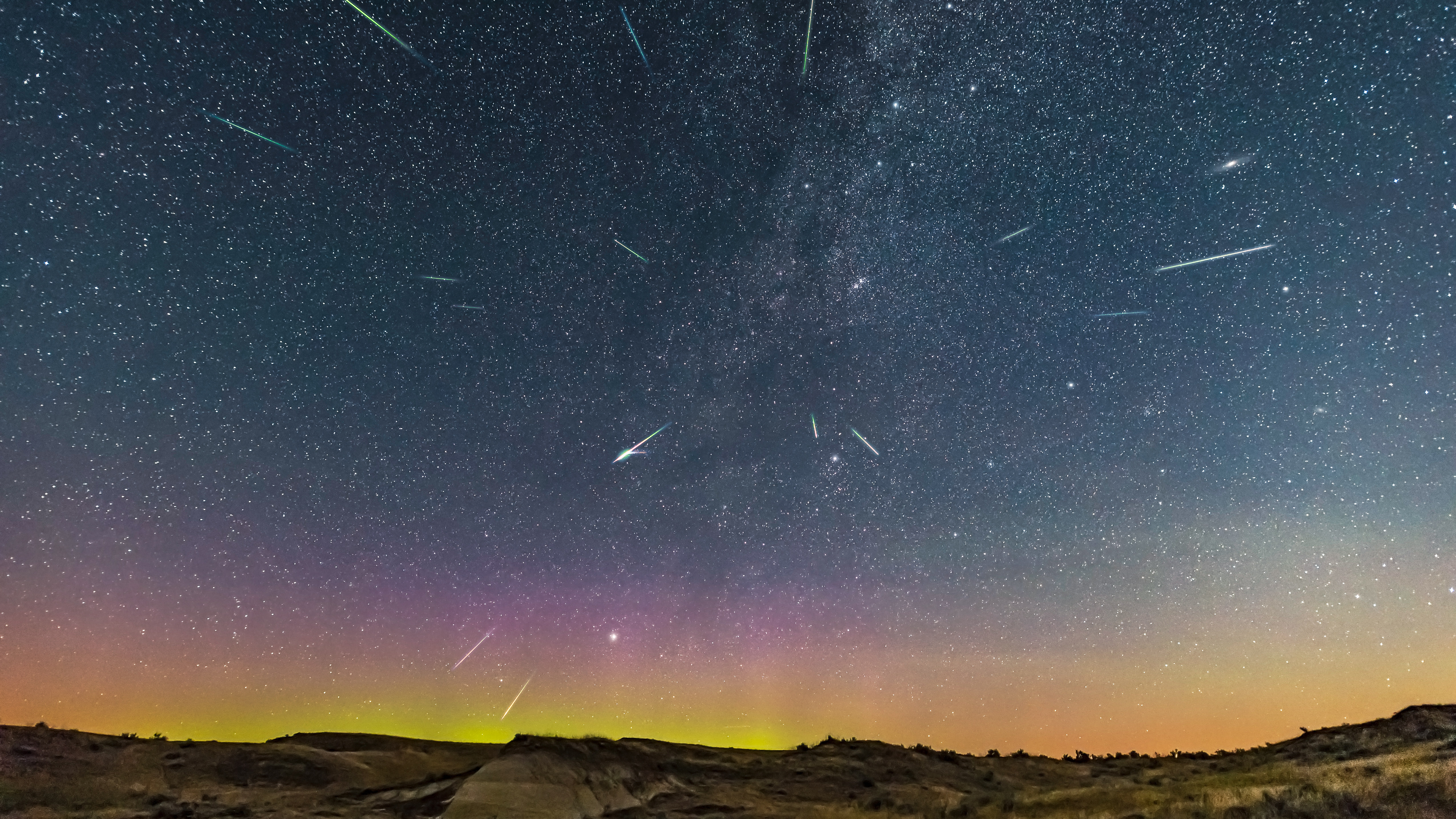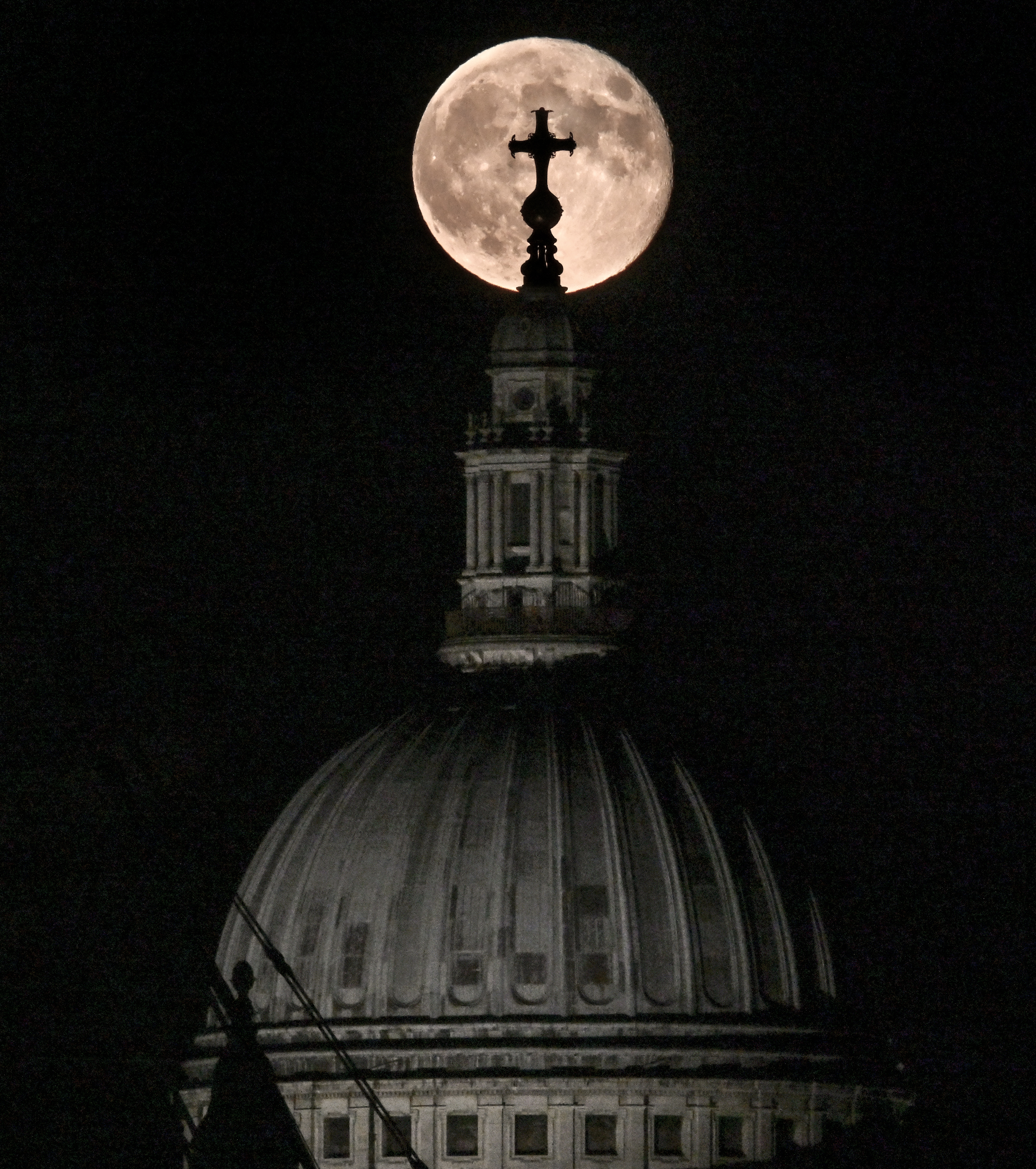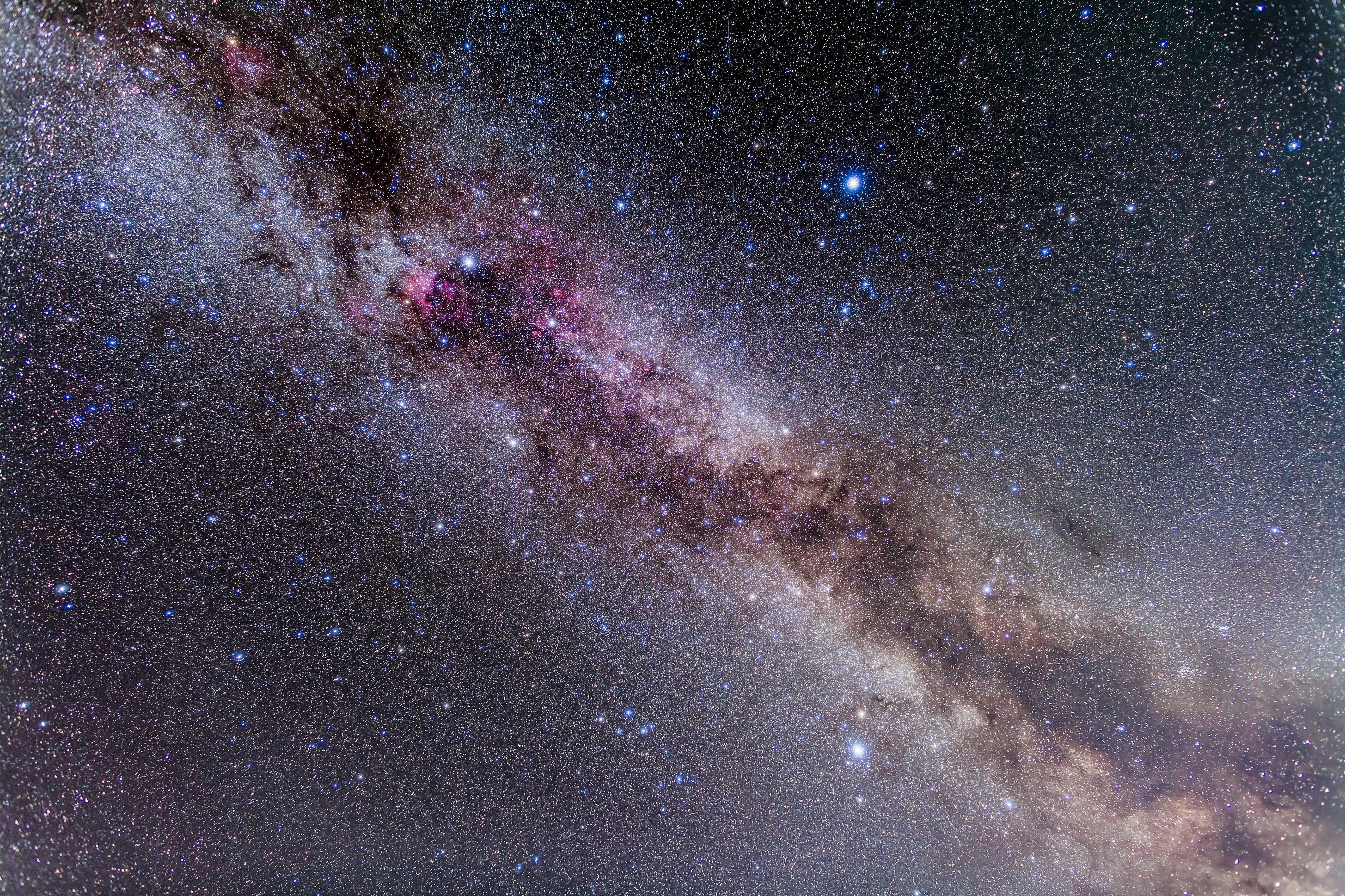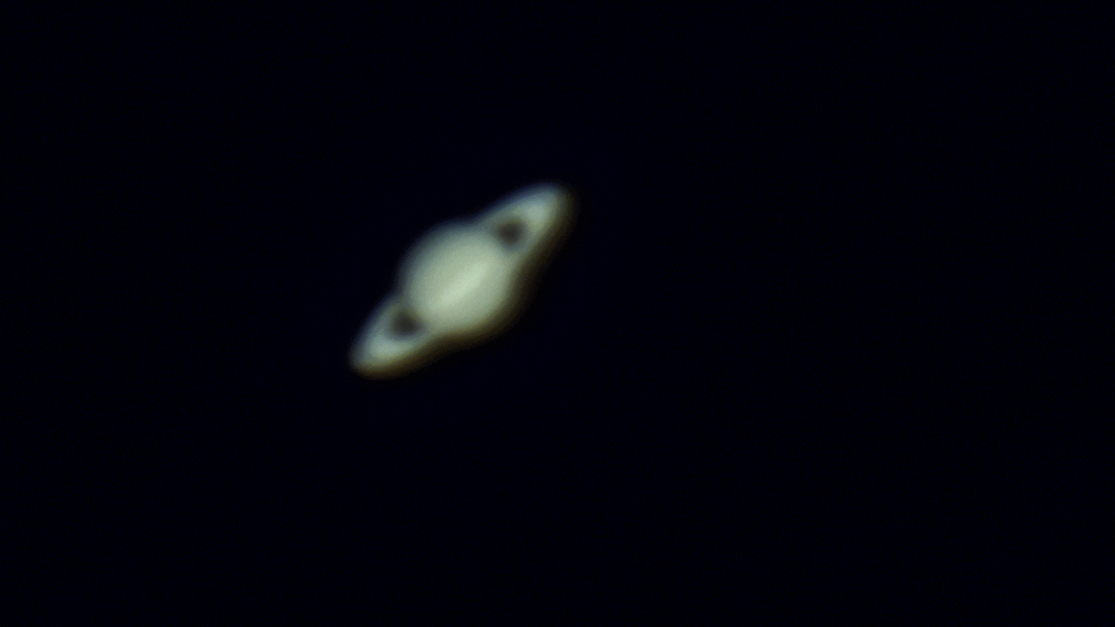
August is one of the best months of the year for astrophotography – and this year that goes double. Not only are the night skies graced by the year’s most famous meteor shower of all – the Perseids – but there are two full moons. An occasional consequence of the moon orbiting Earth every 29 days (or so), August 1’s ‘Sturgeon Moon’ will be followed by August 30’s ‘Blue Moon.’
Add Saturn reaching its opposition and August 2023 is a great time to dust off that camera and tripod and get outside looking up.
Read: Night photography techniques, tips and tricks
Tuesday, August 1: a full ‘Sturgeon Supermoon’

The appearance of the full moon each month is a highlight for many astrophotographers, clear skies allowing. The trick is to recognize that the most impactful moment is when the full moon appears in east on the horizon soon after sunset where there’s still light on the surrounding environment. This month that moment comes at moonrise where you are a few hours after it’s precisely opposite the sun with regard to Earth. As a bonus, the full ‘Sturgeon Moon’ is also the second of four supermoons in 2023, though practically speaking that means very little to the casual observer. Arm yourself with a 70-300mm lens, a tripod, and a remote shutter release and experiment with short exposures from a high position with a good view down to the eastern horizon.
Read: How to photograph the full moon
Tuesday, August 6: ‘Milky Way window’

Tonight is Last Quarter Moon, meaning that our satellite will be half-lit, on the wane and rising after midnight. That makes the next 10 or so nights excellent for astrophotography of all kinds and, this month, for wide-angle shots of the summer Milky Way.
Read: The best lenses for astrophotography
Wednesday, August 9: Moon and Pleiades
If you are up early this morning (as in, just after midnight), there’s a rare chance to catch a late-night moonrise to the right of the famous open cluster of stars called the Pleiades (or the ‘Seven Sisters’). Typically associated with winter, the Pleiades is now rising in the small hours. Although you likely won’t be able to capture it in your camera, Uranus will be to the right of the moon.
Read: When to photograph the moon
Saturday/Sunday, August 12/13: Perseid meteor shower

Although the media likes to hype all kinds of meteor showers these days, astrophotographers have for many decades been imaging this annual event. Predicted to produce around 100 “shooting stars” per hour during its pre-dawn peak on Sunday, August 13, the Perseids is an ideal time to go hunting for a dark place. None more so than this year because, by lucky chance, the Perseids’ peak occurs just a few days before New Moon, so the night skies will be dark. Capturing ‘shooting stars’ is best done automatically (all you need is a tripod, an intervalometer or a shutter release cable that can be locked in place). One option is to take a lawn chair so you can sit back behind the camera's field of view and watch the show with your own eyes. Another is to point your ‘shooting star’ camera northeast (where the source constellation of Perseus will be) and get busy with another camera capturing the Milky Way in the south.
Read: How to photograph a meteor shower
Read: How to photograph the stunning Perseid meteor shower
Wednesday, August 30: a full ‘Blue Supermoon’
The second full moon of August is the third of four supermoons and, technically, it’s the biggest and brightest of the year. It’s actually the brightness you’ll notice most, though only if you regularly image the full moon. However, try to capture it close to the eastern horizon, where it will appear largest purely because it will rise next to buildings, trees and hills. It will be best photographed at moonrise where you are tonight, with Europe having a second chance to photograph it early in the twilight on Thursday, August 31.
Read: The best cameras for astrophotography
Astrophotography shot of the month: close-up of Saturn at opposition

The best time to image the two largest planets in the solar system – Saturn and Jupiter – is during their annual opposition. Since Earth orbits the Sun a lot more quickly than Saturn (29 years) and Jupiter (12 years), once each year we get in between the Sun and one of these planets and they get the full glare of the sun from our point of view. On that night (and for a few weeks on either side) it’s possible to image Saturn and Jupiter full-on and, as a bonus, they rise in the east and dusk and set in the west at dawn.
This month, Saturn reaches opposition, with the date of August 27 the actual moment when it’s 100%-lit from our point of view in 2023. It’s the ideal time to put a telescope on Saturn to see its rings. In almost all backyard telescopes it appears very small. So to image the ringed planet requires a long focal length, a lot of magnification, and some special techniques.
Although any DSLR or mirrorless camera using a wide-angle lens can capture Saturn as a bright dot in the night sky, for a close-up you’ll need a telescope with a minimum of 1,000mm focal length on a tracking mount and one of the best CCD/CMOS digital imaging cameras (also called astronomy or planetary cameras). These cameras shoot high-speed video. You then extract the sharpest frames – something called ‘lucky imaging’ – then stack them using RegiStax (or similar) to create sharp-looking and colorful images. AstroBackyard has a useful overview of the process.
Read: Best CCD cameras for astrophotography: specialist cameras for space watchers







